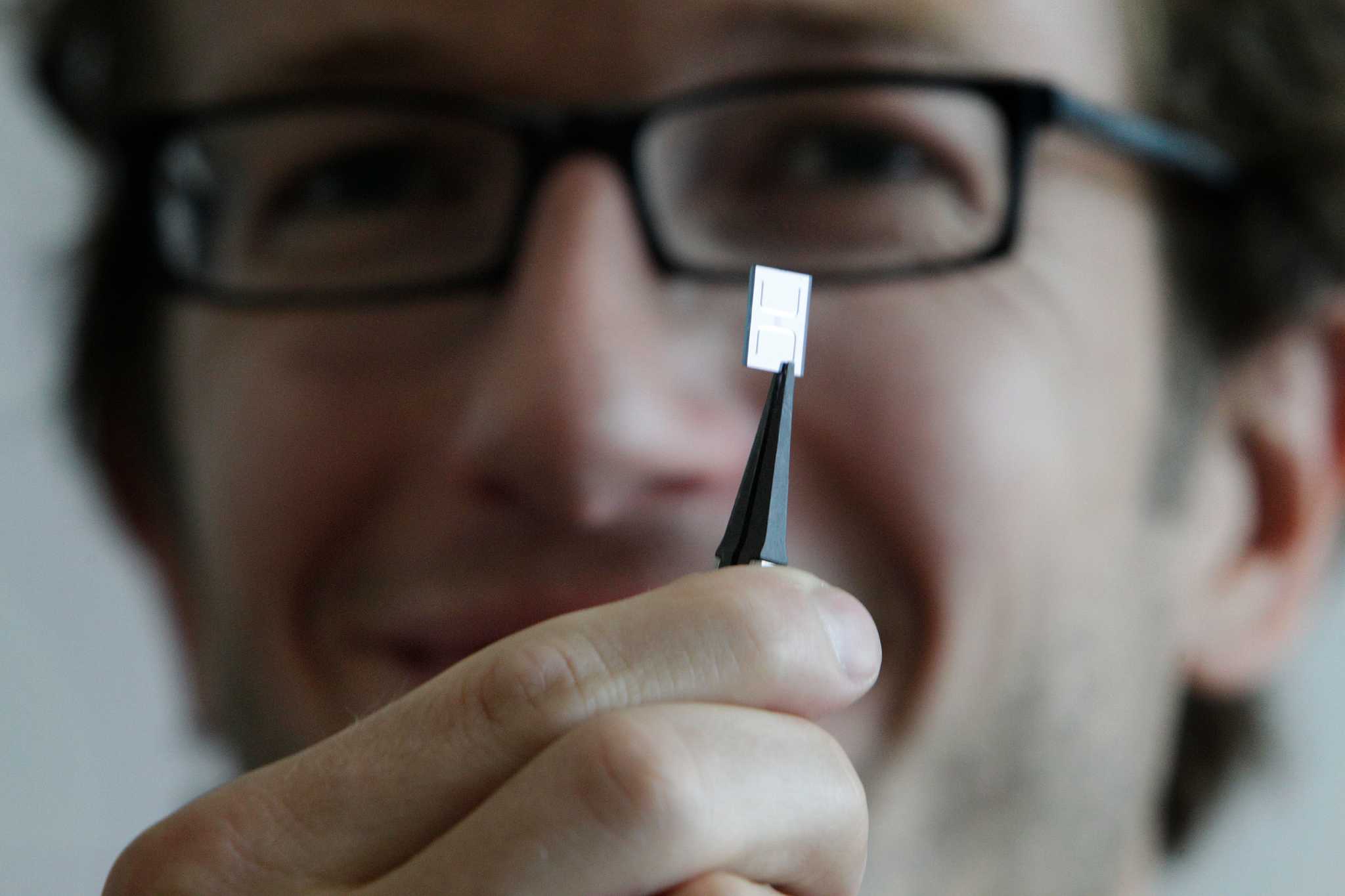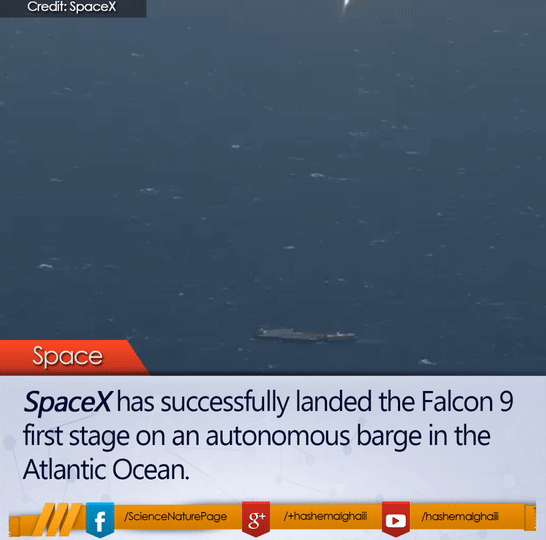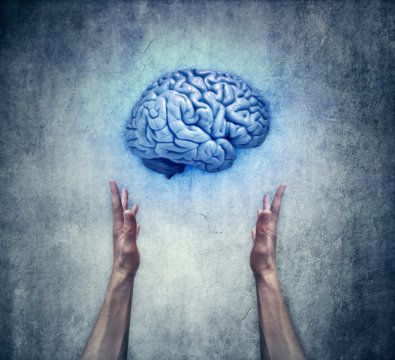Page 11283
Apr 8, 2016
The Next Hot Job in Silicon Valley Is for Poets
Posted by Karen Hurst in category: robotics/AI
Time to brush up on my Yeats, Browning, or Frost.
Demand for chatting virtual assistants and other artificial intelligence (AI) products is creating favorable job prospects for writers, poets, comedians, and other people of artistic persuasion in Silicon Valley.
The industry is tapping them to engineer the personalities of AI tools to make them capable of seamless interaction with people.
Continue reading “The Next Hot Job in Silicon Valley Is for Poets” »
Apr 8, 2016
Houston Methodist and NASA launching unique nanomedicine experiment
Posted by Karen Hurst in categories: biotech/medical, particle physics
Along with equipment and supplies for the astronauts, the rocket was supposed to deliver several scientific experiments, including one Grattoni and his team spent five years perfecting: a study of how drug-like particles disperse through 100 tiny channels etched in a dime-sized microchip. […] it hit him: the rocket — and his work — was gone. Led by Grattoni, the center has secured coveted approval to conduct several experiments in coming years aboard the $100 billion space station, where scientists can exploit the lack of gravity about 200 miles above the Earth’s surface to perform studies they wouldn’t otherwise be allowed to do on Earth.
Apr 8, 2016
Vaccine Delivery Systems that May Protect Against Bioterror Threats & Outbreaks
Posted by Karen Hurst in categories: biotech/medical, nanotechnology, terrorism
Most traditional vaccines have safety and efficacy issues, whereas particulate vaccine delivery systems—which utilize nano- or micro-particulate carriers to protect and deliver antigens—are efficient, stable, include molecules to bolster immune responses, and minimize adverse reactions due to the use of biocompatible biomaterials.
A new review, titled “Particulate delivery systems for vaccination against bioterrorism agents and emerging infectious pathogens,” summarizes the current status of research efforts to develop particulate vaccine delivery systems against bioterrorism agents and emerging infectious pathogens.
Apr 8, 2016
New Zealanders want to give everyone a ‘citizen’s wage’ and scrap benefits
Posted by Shailesh Prasad in category: economics
New Zealand could become one of the first developed countries to scrap benefits and introduce a basic citizens’ income.
Leader of the opposition Andrew Little said his Labour party was considering the idea as part of proposals to combat the “possibility of higher structural unemployment”.
Citizens’ income, also known as Universal Basic Income (UBI), involves a basic, unconditional, fixed payment made to every person in the country by the state in lieu of benefits.
Continue reading “New Zealanders want to give everyone a ‘citizen’s wage’ and scrap benefits” »
Apr 8, 2016
SpaceX successfully lands its rocket on a floating drone ship for the first time
Posted by Shailesh Prasad in categories: drones, satellites

SpaceX has finally landed its Falcon 9 rocket on a drone ship at sea, after launching the vehicle into space this afternoon. It’s the first time the company has been able to pull off an ocean landing, after four previous attempts ended in failure. Today’s success is a crucial milestone for SpaceX, as it shows the company can land its rockets both on solid ground and ocean.
This is the second time SpaceX has successfully landed one of its rockets post-launch; the first time was in December, when the company’s Falcon 9 rocket touched down at a ground-based landing site in Cape Canaveral, Florida, after putting a satellite into space. Now that SpaceX has demonstrated it can do both types of landings, the company can potentially recover and reuse even more rockets in the future. And that could mean much greater cost savings for SpaceX.
Apr 8, 2016
Google X Schaft Robotics Show Off Bipedal Robot in Tokyo
Posted by Shailesh Prasad in category: robotics/AI
Apr 8, 2016
Transcranial direct current stimulation can boost language comprehension: Stimulation of the brain’s left angular gyrus enhanced the comprehension of simple, two-word phrases
Posted by Shailesh Prasad in categories: biotech/medical, neuroscience
How the human brain processes the words we hear and constructs complex concepts is still somewhat of a mystery to the neuroscience community. Transcranial direct current stimulation (tDCS) can alter our language processing, allowing for faster comprehension of meaningful word combinations, according to new research from the department of Neurology the Perelman School of Medicine at the University of Pennsylvania. The work is published in the Journal of Neuroscience.
“Integrating conceptual knowledge is one of the neural functions fundamental to human intelligence,” said the study’s first author Amy Price, a neuroscience graduate student at Penn. “For example, when we read or listen to a sentence, we need to combine, or integrate, the meaning of the words to understand the full idea of the sentence. We perform this process effortlessly on a daily basis but it is quite a complex process and little is known about the brain regions that support this ability.”
Semantic memory is our stored knowledge about the world, such as the meaning of words and objects. “We sought to understand how and in what part of the brain semantic representations are integrated into more complex ideas” said senior author Roy Hamilton, MD, MS, an assistant professor in the departments of Neurology and Physical Medicine & Rehabilitation, and director of the Laboratory for Cognition and Neural Stimulation at Penn. Recent findings from functional MRI scans (fMRI) and magnetoencephalography (MEG) have suggested the angular gyrus, a region of the brain known to be involved in language, number processing and spatial cognition, memory retrieval and attention, as a potential hub for semantic memory integration, specifically the left angular gyrus.
Apr 8, 2016
Blood-brain barrier breakthrough reported by researchers
Posted by Shailesh Prasad in categories: biotech/medical, neuroscience
The blood-brain barrier has stymied direct treatment of brain disorders. In a recently published study, a researcher reports finding a way to pass therapeutics through the barrier, using readily-available agents.
















